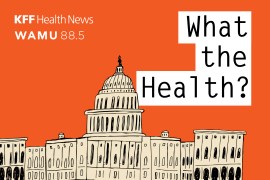U.N. Report Calls For $1.48B To Help Developing Nations Cope With H1N1
The U.N. this week will request that wealthy nations and development banks donate $1.48 billion to help developing countries fight H1N1 (swine flu), Bloomberg reports. "Most of the money is needed for vaccines and drugs to help the least-developed nations cope with the influenza pandemic, according to a U.N. report obtained" Monday by the news service. WHO Director-General Margaret Chan is scheduled to meet with U.N. leaders in New York Thursday to review the report, "which calls for an urgent response to the new H1N1 flu strain in countries from Afghanistan to Zimbabwe," according to Bloomberg. The report "was prepared by the WHO, the Office for the Coordination of Humanitarian Affairs and the U.N. System Influenza Coordination in response to a request by donors for an assessment of needs," the news service adds (Gale, 9/21).
The report "paints a disastrous picture for the world's most vulnerable people unless there is immediate action. 'There is a window in which it will be possible to help poor countries get as ready as they can for H1N1 and that window is closing rapidly,' it says," the Observer writes. "The 47-page report provides a detailed breakdown of the basic needs of 75 vulnerable countries with the weakest capacity to withstand an escalation of the virus. Six countries from Latin America, including Cuba and Bolivia, 21 countries from Asia and the Pacific such as North Korea and Bangladesh, and 40 countries from Africa such as Congo and Eritrea are included in the survey" (Syal, 9/20).
Donations from vaccine makers and a recent agreement by a group of developed countries to give some of their vaccine supplies to developing countries "will defray the $600 million the U.N. estimates it will cost to immunize health-care workers and other essential service personnel in the 85 developing countries that otherwise have no access to the inoculation." However, in the report, "[t]he WHO [estimates] $1.14 billion of pharmaceuticals will be needed, with the remaining $340 million earmarked mainly for aiding country readiness and U.N. agencies," Bloomberg writes (9/21).
WHO's Western Pacific Meeting Focuses On Bolstering Poor Nations' H1N1 Fight
How to best prepare developing nations to cope with H1N1 will take center stage at the WHO's Western Pacific meeting in Hong Kong this week, Agence France-Presse/Brisbane Times reports. "Developing countries such as the Philippines are not only unable to produce the vaccine for the [H1N1] flu virus but their people are more vulnerable to infection because of poverty, crowded living conditions and lack of health care," the news service writes. According to Shin Young-soo, WHO regional director, there are roughly a million people living in poor conditions without access to health care in the Western Pacific region (Wason, 9/21). Speaking at the opening of the WHO regional meeting, WHO Director-General Margaret Chan said Monday said the H1N1 virus thus far has failed to mutate into a more deadly form, AFP writes (Wason [2], 9/21).
Inhalable H1N1 Vaccine To Arrive In U.S. First Week Of October, CDC Says
The CDC on Friday announced it anticipates 3.4 million doses of inhalable H1N1 vaccines will be available by the first week of October the initial influx of 195 million doses purchased by the U.S. government, CNN reports. The vaccine is approved for healthy people between the ages of two and 49, but not for pregnant women (9/18).
In addition to the nasal spray vaccine, known as FluMist, Jay Butler, of the CDC, said it is possible that some injectable H1N1 vaccines will be available in early October as well, the Associated Press/ABC News reports (Stobbe, 9/18).
The Washington Post examines the H1N1 vaccine plan CDC unveiled on Friday: "Vaccine for the H1N1 influenza pandemic will be distributed on a three-day turnaround time from four regional warehouses around the country next month. The vaccine deliveries, expected to equal 20 million doses a week by the end of October, will be distributed among 90,000 immunization 'providers,' including health departments, hospitals, clinics, doctors' offices and pharmacies." The newspaper continues, "Government planners expect demand for vaccine will outstrip supply in the first weeks after it becomes available. During that time, states will have to decide which hospitals, clinics and offices are most apt to reach the priority populations and thus should get vaccine first" (Brown, 9/19).
In related news, the pharmaceutical company Sanofi-Aventis on Monday announced it expects doses of its H1N1 vaccine to arrive in the U.S. by mid-October, the AP reports (9/21).
Slate examines the decision by U.S. health officials to order H1N1 vaccines that do not use adjuvants (Dobbs, 9/17).
Africa Reports 8,000 H1N1 Cases, 46 Deaths
Africa has confirmed 8,000 cases of the H1N1, which have led to 46 deaths, according to a WHO researcher, PANA/Afrique en ligne reports (9/17).
This is part of the Morning Briefing, a summary of health policy coverage from major news organizations. Sign up for an email subscription.





